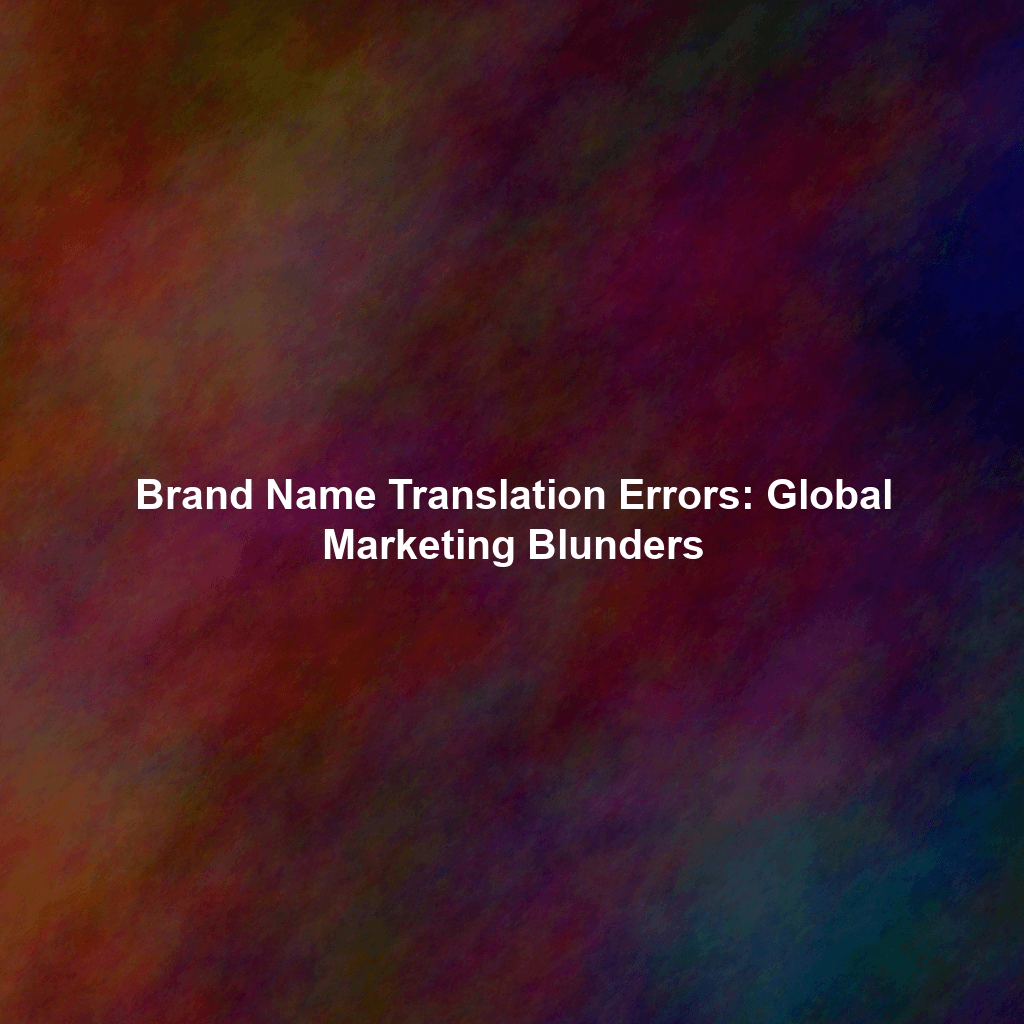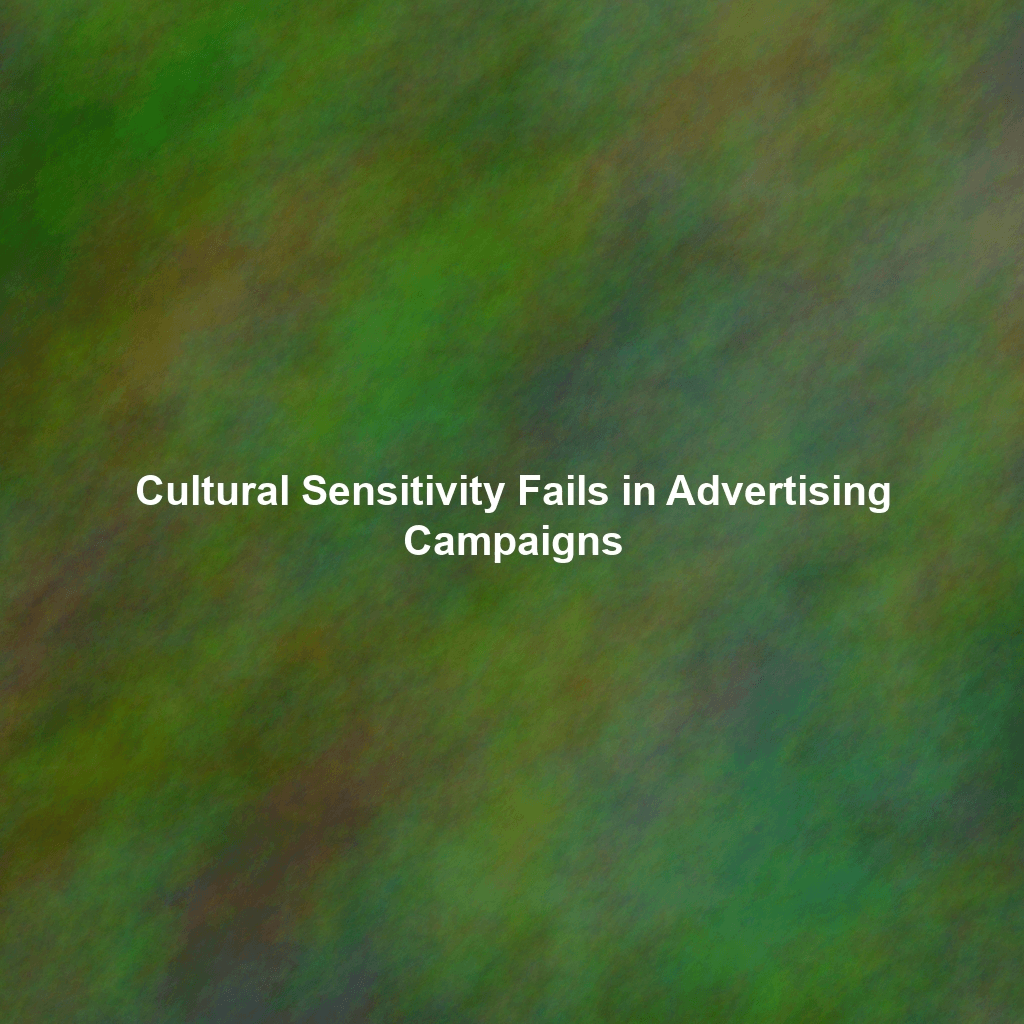The Perils of Poor Translation: When Brand Names Go Wrong
Why Translation is More Than Just Words
The challenge lies in understanding that translation is far more than a simple word-for-word conversion. It’s about understanding cultural nuances, idiomatic expressions, and the overall context in which a word or phrase is used. A successful brand name resonates with the target audience, evokes positive emotions, and accurately reflects the brand’s identity. Achieving this requires a deep understanding of the local language and culture.
The Importance of Linguistic Sensitivity
Linguistic sensitivity is paramount. A seemingly harmless word in one culture might carry negative connotations in another. For instance, a word that sounds similar to a swear word or has a double meaning can instantly turn off potential customers. Cultural norms and sensitivities surrounding topics like religion, politics, or even food can also influence how a brand name is perceived. Ignoring these nuances can lead to marketing campaigns that are not only ineffective but also offensive.
Case Studies: Hilarious and Costly Brand Name Translation Blunders
Let’s delve into some real-world examples of brand name translation errors that caused significant marketing headaches. These stories serve as valuable lessons for companies venturing into international markets.
1. Coca-Cola’s Initial Stumble in China
When Coca-Cola first entered the Chinese market, they encountered a significant challenge: finding a Chinese name that sounded similar to “Coca-Cola.” The initial translations resulted in names that meant “bite the wax tadpole” or “wax-flattened mare,” neither of which was particularly appealing. It took considerable effort and research to finally land on a suitable Chinese name, “Kekoukele” (可口可樂), which roughly translates to “tasty happiness.”
2. Chevrolet Nova’s Sales Struggles in Spanish-Speaking Countries
The Chevrolet Nova is perhaps one of the most well-known examples of a brand name translation failure. “No va” in Spanish translates to “it doesn’t go.” Understandably, potential buyers in Spanish-speaking countries were hesitant to purchase a car with a name that suggested it wouldn’t function properly. While the exact impact of the name on sales is debated (other factors likely contributed), the anecdote serves as a powerful reminder of the importance of linguistic consideration.
3. Ford Pinto’s Problematic Portuguese Translation
The Ford Pinto, a popular subcompact car in the United States, faced an embarrassing situation when introduced to Brazil. In Brazilian Portuguese, “Pinto” is a slang term for male genitalia. While the car ultimately sold in Brazil under a different name (Corcel), the initial blunder highlights the potential for misinterpretation and the importance of thorough linguistic research.
4. Braniff Airlines’ “Fly in Leather” Mishap
Braniff Airlines launched a campaign promoting their luxurious leather seats with the slogan “Fly in Leather.” When translated into Spanish, it became “Vuela en Cuero,” which is more accurately interpreted as “Fly Naked.” This misinterpretation led to amusement and ridicule rather than attracting customers.
5. Vicks’ German “Vick” Problem
Vicks, a well-known cough drop and ointment brand, faced an issue in Germany. The German pronunciation of “Vick” sounds strikingly similar to a vulgar slang term for a common bodily function. While not a complete disaster, it certainly caused some initial hesitation and required careful marketing to overcome the negative association.
6. Pepsi’s Generation Gap in China
Pepsi’s slogan, “Pepsi Brings You Back to Life,” was translated into Chinese as “Pepsi Brings Your Ancestors Back From the Grave.” This translation was not only inaccurate but also culturally insensitive, as it invoked themes of death and the afterlife, which are considered taboo in many Chinese contexts.
The Consequences of Getting it Wrong
The consequences of a brand name translation error can be far-reaching and detrimental to a company’s bottom line. These errors can lead to:
- Damage to Brand Reputation: A poorly translated name can create a negative image and erode consumer trust.
- Loss of Sales: Consumers may be hesitant to purchase a product with a name that is offensive, confusing, or simply sounds unpleasant.
- Marketing Campaign Failures: A flawed brand name can render an entire marketing campaign ineffective.
- Costly Rebranding Efforts: Correcting a translation error often requires a complete rebranding, which can be expensive and time-consuming.
- Legal Issues: In some cases, an offensive or inappropriate brand name may even lead to legal challenges.
Avoiding the Translation Trap: Best Practices for Global Branding
Fortunately, there are steps companies can take to avoid the pitfalls of brand name translation errors and ensure successful international expansion.
1. Conduct Thorough Linguistic Research
Before launching a brand name in a new market, it’s essential to conduct thorough linguistic research. This involves consulting with native speakers, linguists, and cultural experts to understand the nuances of the local language and culture. The research should go beyond simple dictionary definitions and explore the connotations, idiomatic expressions, and potential misinterpretations associated with the brand name.
2. Use Native Translators
Employ professional translators who are native speakers of the target language. Native speakers possess an innate understanding of the language’s subtleties and cultural context, which is crucial for accurate and effective translation. Avoid relying solely on automated translation tools, as they often lack the ability to capture the nuances of human language.
3. Back-Translation
Consider using back-translation as a quality control measure. Back-translation involves translating the translated brand name back into the original language by a different translator. Comparing the original and back-translated versions can help identify any discrepancies or potential issues.
4. Focus Groups and Consumer Testing
Conduct focus groups and consumer testing in the target market to gauge consumer reactions to the brand name. These sessions can provide valuable insights into how the name is perceived and whether it resonates with the target audience. Pay close attention to both verbal and nonverbal cues, as these can reveal underlying attitudes and emotions.
5. Consider Alternative Naming Strategies
In some cases, it may be advisable to consider alternative naming strategies, such as using a completely new brand name specifically tailored to the target market. This approach can avoid potential translation issues and ensure that the brand name resonates with the local culture.
6. Protect your Brand Name
Once a brand name has been selected for a new market, it is important to protect it legally. Ensure that the brand name is trademarked in the target country to prevent others from using it. Conduct a trademark search to identify any existing trademarks that may conflict with the proposed brand name.
7. Be Aware of Cultural Differences
Cultural differences can also play a role in how a brand name is perceived. Be mindful of cultural norms, values, and beliefs when selecting a brand name. For example, certain colors or symbols may have different meanings in different cultures. Research the cultural background of your target demographic as much as possible.
Beyond Translation: Adapting Your Marketing Message
While accurate brand name translation is crucial, it’s only one piece of the puzzle. Successful global marketing requires adapting your entire marketing message to resonate with the target audience. This includes:
- Cultural Sensitivity: Tailor your messaging to be culturally appropriate and avoid any potentially offensive content.
- Visual Elements: Adapt visuals, such as colors, images, and typography, to align with local preferences.
- Humor: Be cautious when using humor, as what is funny in one culture may not be in another.
- Local Channels: Utilize local marketing channels and platforms to reach your target audience effectively.
Conclusion: A Global Lesson in Humility
Brand name translation errors serve as a humbling reminder that even the most successful companies can make mistakes when venturing into new markets. By prioritizing thorough linguistic research, cultural sensitivity, and professional translation services, companies can avoid these costly blunders and build strong, resonant brands that thrive on a global scale. The key takeaway is to invest in understanding your target audience beyond just their language; understanding their culture is paramount to building a lasting, positive connection.
 Skip to content
Skip to content

